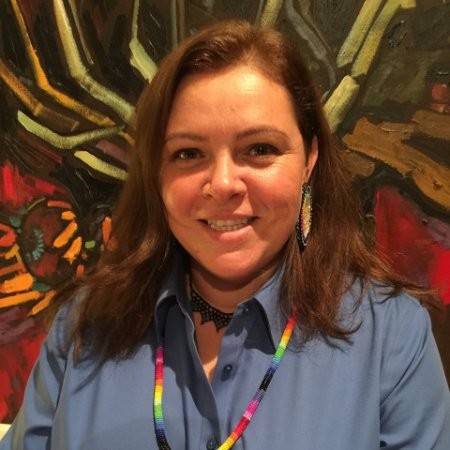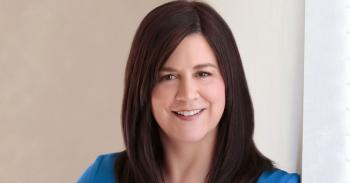Image Caption
Summary
Local Journalism Initiative Reporter
Windspeaker.com
The next composition of the Supreme Court of Canada is expected to include its first Indigenous justice.
Michelle O’Bonsawin, an Abenaki member of the Odanak Nation, appeared before the Commons Justice and Human Rights Committee today, Aug. 24, to answer questions as a nominee to the highest court.
Prime Minister Justin Trudeau’s announcement, which came on Aug. 19, was welcomed by Indigenous groups as a much-needed step toward further diversification of the Supreme Court and reconciliation.
Last year marked the first appointment of a person of colour to the Supreme Court.
O’Bonsawin has been a judge of the Ontario Superior Court of Justice in Ottawa since 2017. She is bilingual in French and English, a requirement to sit on the Supreme Court.

Christa Big Canoe, who served as lead commission counsel for the National Inquiry into Missing and Murdered Indigenous Women and Girls and who is presently the legal director at Aboriginal Legal Services in Toronto, calls the nomination “significant and substantial, because here’s the highest court in the land making determinations on issues that are Indigenous-specific with zero Indigenous perspective.”
Big Canoe points out that the Indigenous Bar Association (IBA) has been advocating for such a nomination for well over a decade.
In fact, O’Bonsawin was short-listed by the Independent Advisory Board for the Supreme Court of Canada Judicial Appointments which, for the first time ever, included an additional member selected by the Indigenous Bar Association. The IBA’s inclusion in the process was in response to the minister of Justice’s mandate letter from Trudeau to work with stakeholders to encourage more Indigenous peoples to join the bench.
In a statement, the IBA said O’Bonsawin’s appointment would bring “historic changes … in the years to come. Historically, despite Indigenous SCC justice candidates making significant contributions to Canada’s legal systems, they are often systemically excluded or dismissed from the process due to internalized and institutional racism.”
Retired senator Murray Sinclair, Manitoba’s first Indigenous Justice and the former chief commissioner of the Truth and Reconciliation Commission on the legacy of Indian residential schools, said he “advised from time to time” O’Bonsawin during the application process.
In a statement Sinclair called O’Bonsawin an “important voice…as it relates to issues facing Canada’s long journey of reconciliation with First Nations, Métis and Inuit.”
Big Canoe, who has argued in front of the Supreme Court, also perceives O’Bonsawin as a welcoming face when Indigenous organizations or individuals argue at the highest court.
Big Canoe remembers feeling “at least one person in the room was listening to me” when she argued at the Ontario Court of Appeal and Justice Harry LaForme was on the bench. LaForme is Anishinaabe and a member of the Mississaugas of the New Credit First Nation.
She makes it clear she is not expecting special treatment from O’Bonsawin because they’re both Indigenous and she knows she needs to keep her legal arguments “succinct, concise,” but she also knows that O’Bonsawin will “bring the lived experience of an Indigenous person and an understanding of how there are so many issues before courts where Indigenous people are… mass represented. She’ll come with a knowledge or perspective that understands the impact to Indigenous communities.”
Among O’Bonsawin’s areas of specialization, as outlined in her questionnaire, are mental health law, Indigenous issues, Gladue principles, labour and employment law, human rights, privacy and access to information law.
Gladue principles take into consideration the unique circumstances facing an Indigenous offender due to the challenges created by colonialism. The principles apply in criminal court and are used for sentencing purposes.
Big Canoe, who presented on a panel with O’Bonsawin, says O’Bonsawin “made a point” of speaking about the colonial legacy and its intergenerational impact on Indigenous people and communities. O’Bonsawin recognized that mental health or long-term post-trauma are part of the legal issues facing many Indigenous peoples and lead to the mass overrepresentation of Indigenous people in the justice system.
O’Bonsawin’s expertise, says Big Canoe, will further diversify a Supreme Court which for years has “seemed criminal heavy with lack of awareness of Aboriginal treaty rights or inherent rights.”
While O’Bonsawin will be the lone Indigenous voice on the Supreme Court, Big Canoe says the hope is that she will be able to guide the other judges on the bench to listen and understand the Indigenous perspective.
Big Canoe also sees O’Bonsawin’s appointment as providing an opportunity for another step forward which could come in Indigenous law clerks serving the other eight justices.
It isn’t lost on Big Canoe that O’Bonsawin faces a steep learning curve, but she has faith in O’Bonsawin’s strong work ethic and discipline.
O’Bonsawin will also be answering questions before the Standing Senate Committee on Legal and Constitutional Affairs as part of the process of being appointed to the Supreme Court.
The seat on the Supreme Court of Canada became vacant with the pending September 2022 retirement of Justice Michael Moldaver. As Moldaver was appointed to the Supreme Court from the Court of Appeal for Ontario, the process for his replacement was open to candidates from Ontario in keeping with the custom of regional representation.
The Supreme Court of Canada consists of nine justices. It sits in Ottawa and holds three sessions a year. Annually it hears on average between 65 and 80 appeals.
Local Journalism Initiative Reporters are supported by a financial contribution made by the Government of Canada.

